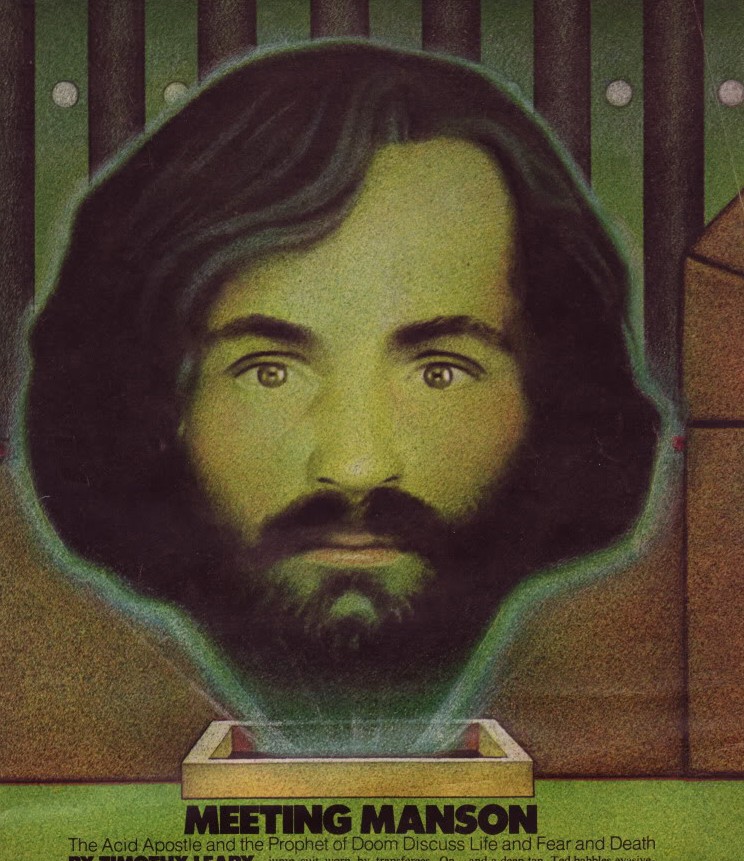Because it was inevitable, Timothy Leary once met Charles Manson. In prison, of course—Folsom to be exact. The LSD guru had been apprehended by the FBI in Afghanistan and extradited. One of his cellmates was the Helter Skelter dipshit. Leary documented the meeting in a 1976 article in OUI, a middling vagina periodical of the Magazine Age. The article’s opening:
Commodore Leri, Agent from Central Intelligence assigned to earth, third planet of the G-type Star, sits on the bench of the holding cell of Soledad Prison, dressed in the white jump suit worn by transferees. On his left, John O’Neill, a slick good-looking big-city Irishman down for ten to life for murder two. To his right, a tall, slim, pretty cowboy named Ted with Indian cheekbones and a deep tan. Ted babbles evasively. He has been in and out of the joint for years and has the reputation of being a professional fuck-up. (‘He ain’t playing with a full deck,’ whispers O’Neill. ‘He’s one of the girls and a snitch, too.’) The three hold one-way tickets to the Dark Tower, and that has formed a bond among them. The Dark Tower is Folsom, a trans-Einsteinian Black Hole in the Earth Galaxy from which nothing ever escapes but feeble red radiation.
· · ·
Leri had done some primatology research in Hollywood after the Tate-LaBianca murders and was fascinated by the wave of fright that swept through the film colony. The chic reaction was to install gate locks, which were opened by remote control after visitors identified themselves over an intercom. Whatever solace this arrangement provided, it certainly would not have thwarted the creepy-crawly Mansonites, who avoided the gate at the Tate house because they suspected that it was electrified. So Leri wrote a memoir for OUI magazine to show that none of the human fears that Manson systematically exploited can be neutralized by external defenses. These terrors, he wrote, are internal neurological reactions and, in order to understand Manson, one must understand the neurology of human fear.
Manson, it was said, stimulated fear in others in order to gain power.
‘One aspect of Manson’s philosophy especially puzzled me: his strange attitude toward fear,’ Vincent Bugliosi says in Helter Skelter. ‘He not only preached that fear as beautiful, he often told the family that they should live in a constant state of fear. What did he mean by that? I asked Paul [Watkins, Manson’s second-in-command].
‘To Charlie, fear was the same thing as awareness, Watkins said. The more fear you have, the more awareness, hence the more love. When you’re really afraid, you come to ‘Now.’ And when you are at Now, you are totally conscious.’
Let us give credit where credit is due: Manson’s manipulation of fear has its roots in the paranoia behind the Cold War military posture, the antidrug scare campaigns, the addictive success of the most-popular movies and crime shows, the actions of all bureaucracy and law-enforcement agencies, and the operation of our penal institutions.
Before we can understand Manson, we must realize that a prison system is a microcosm of a culture and that the American prison system is run on raw fear and violence.”•
_________________________
Leary (sans Manson) interviewed at Folsom.

